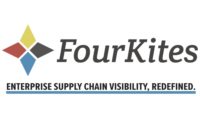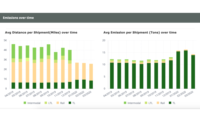Fourkites and Reuters research highlights massive challenges facing European supply chains

To better understand the state of European supply chains, FourKites, a real-time supply chain visibility platform, partnered with Reuters Events to survey over 450 supply chain leaders across the continent, with particular emphasis on the United Kingdom, Germany, and the Netherlands. The responses represent a broad perspective of the concerns and challenges surrounding European supply chains, sustainability, and the role of real-time visibility in streamlining operations.
Coming in the midst of ongoing disruptions caused by COVID-19, State of the European Supply Chain: Logistics, Sustainability and Visibility Report 2022 reveals that the demand shock, labor shortages, port disruptions, and capacity constraints have accelerated the adoption of supply chain visibility solutions throughout Europe. However, while many companies have adopted new digital practices, more than 60 percent of European companies admitted they’re slow to react to changing trends in logistics technologies, according to the report.
Key findings include:
- Over half of all respondents are currently using supply chain visibility solutions, but one-third (33 percent) are having trouble improving data-driven processes such as forecasting, receiving operations, and labor.
- The majority of respondents (67 percent) cited end-to-end freight traceability as their biggest pain point when transporting goods.
- More than half of respondents (63 percent) cited carriers providing inaccurate ETAs as a persistent problem.
“If we have visibility, we can be efficient and flexible," said Ferenc Polgar, global distribution operational excellence lead at Bayer. "We can communicate delays to our customers so they can adjust their operations and improve their experience. We can be more effective during peak distribution periods to make sure plans are going accordingly.”
“Being able to see your goods in transit is one piece of the puzzle, but it doesn’t help navigate the many disruptions and delays that inevitably take place once the product leaves the ship or warehouse,” said Matt Elenjickal, founder and CEO of FourKites. “For that reason, the paradigm is shifting to full end-to-end supply chain visibility, wherein the goal is total predictive visibility across the entire supply chain, enabling proactive risk management vs. reactive problem-solving.”
Pain points vary between the UK, Germany, and the Netherlands
Looking at their three biggest pain points in transporting goods, respondents from the UK, Germany and the Netherlands had surprisingly different answers:
- The UK was relatively balanced, with 71 percent of respondents citing end-to-end freight traceability, carrier relationships, and dwell times as their biggest pain points.
- In the Netherlands, 75 percent of retailers and manufacturers said their biggest pain point was carrier relationships.
- In Germany, 100 percent of respondents were struggling with ensuring end-to-end freight traceability.
Overall, respondents indicated supply chain visibility improved their planning and inventory management (60 percent), customer service (56 percent) and increased efficiency (38 percent). In the Netherlands, 40 percent saw an improvement to customer service whereas in Germany that number was even higher at 100 percent. Meanwhile, in the UK 63 percent said that improved planning and inventory management is the primary benefit of visibility.
Even the most commonly used mode of transportation also varied widely across the continent: 63 percent of UK respondents cited full truckload as their key mode of freight, while 80 percent of Netherlands respondents are using less than truckload, and 100 percent of German respondents are transporting freight by air, both domestically and internationally.
Sustainability is a priority, but not without challenges
The survey illustrates that sustainability is top of mind for today’s supply chain leaders. Over 80 percent indicated that they were either holding steady (44 percent) or increasing (40 percent) their commitment to sustainability, emphasizing the urgency with which businesses understand they are required to act.
The two key supply chain sustainability goals articulated by respondents were the reduction of carbon emissions in transportation (39 percent) and manufacturing (31 percent), as well as the reduction of non-renewable packaging materials (31 percent). However, over a quarter of respondents also reported mapping sustainability impact throughout their supply chain as a challenge to modernizing transportation assets.
"We use supply chain visibility data to understand better where there's waste within the supply chain. Where do we have excessive empty miles?" said Paul Avampato, head of international logistics at Henkel. "We believe by reducing dwell time that we can keep the network moving smoother. The more we reduce dwell time, the less trucks that you have to put on the road."
Read the full report here.
Looking for a reprint of this article?
From high-res PDFs to custom plaques, order your copy today!






